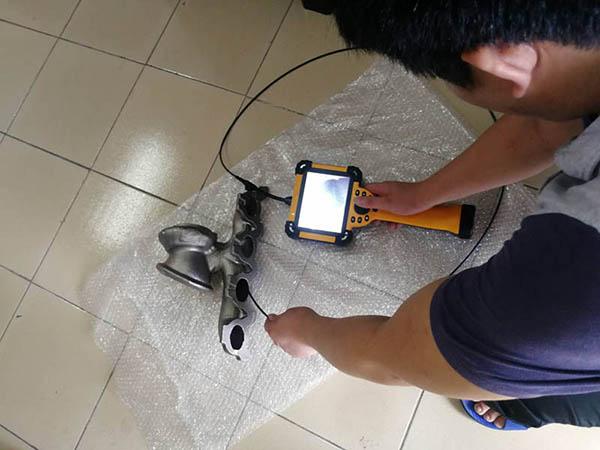The Application of Industrial Endoscopes in Pipeline Inspection
2023-10-10
In the world of industry and infrastructure, maintaining the integrity and functionality of pipelines is of paramount importance. Whether it's in the oil and gas sector, wastewater treatment plants, or any other industry relying on pipelines, the early detection of defects or issues can save time, money, and potentially prevent catastrophic failures. This is where industrial endoscopes come into play, revolutionizing the way we inspect and assess the condition of pipelines.
Understanding Industrial Endoscopes
Industrial endoscopes, also known as borescopes, are versatile tools used for visual inspection of the interior of hard-to-reach spaces such as pipelines, machinery, engines, and more. They consist of a flexible or rigid tube with a camera at one end and often feature LED lighting to illuminate the inspection area. These devices can capture high-resolution images and videos, allowing inspectors and engineers to remotely assess the condition of the target area without the need for costly and time-consuming disassembly.
The Role of Industrial Endoscopes in Pipeline Inspection
1. Early Detection of Defects
One of the primary advantages of using industrial endoscopes in pipeline inspection is their ability to detect defects and issues at an early stage. Whether it's corrosion, cracks, blockages, or other anomalies, endoscopes provide visual evidence that can aid in timely maintenance and repairs. Early detection can prevent minor issues from escalating into major problems, reducing downtime and avoiding costly repairs or replacements.
2. Remote Inspection
Pipelines are often situated in remote or hard-to-access locations, making traditional inspection methods challenging and expensive. Industrial endoscopes offer the advantage of remote inspection. Operators can insert the endoscope into the pipeline entrance and navigate it through the length of the pipe while viewing the live feed on a screen. This remote capability minimizes the need for personnel to physically enter confined spaces or inaccessible areas, enhancing safety and efficiency.
3. Non-Destructive Testing
Industrial endoscopes are a non-destructive testing (NDT) tool, meaning they can inspect pipelines without causing any damage. Traditional methods like cutting into the pipe for inspection are not only costly but can also compromise the structural integrity of the pipeline. Endoscopic inspections, on the other hand, leave pipelines intact while providing valuable insights into their condition.

4. Versatility
Industrial endoscopes come in various sizes and configurations, making them adaptable to different pipeline diameters and materials. Whether you're dealing with small-diameter pipes or large industrial pipelines, there's likely an endoscope suitable for the job. Some endoscopes are even designed for use in hazardous environments, such as those found in the petrochemical industry.
Challenges and Future Developments
While industrial endoscopes have greatly improved pipeline inspection practices, there are still challenges to overcome. These include improving image quality, increasing the length of the flexible probe, and enhancing the durability of endoscope components to withstand harsh conditions.
Looking ahead, the integration of advanced technologies like artificial intelligence (AI) and robotics could further enhance the capabilities of industrial endoscopes. AI algorithms can assist in the real-time analysis of images and videos, helping inspectors identify defects more quickly and accurately. Additionally, the use of robotic endoscope systems could enable autonomous inspections of extensive pipeline networks.
In conclusion, industrial endoscopes have revolutionized the field of pipeline inspection by offering a non-destructive, remote, and efficient means of assessing pipeline conditions. As technology continues to advance, these invaluable tools will play an increasingly crucial role in ensuring the safety and reliability of critical infrastructure worldwide.



